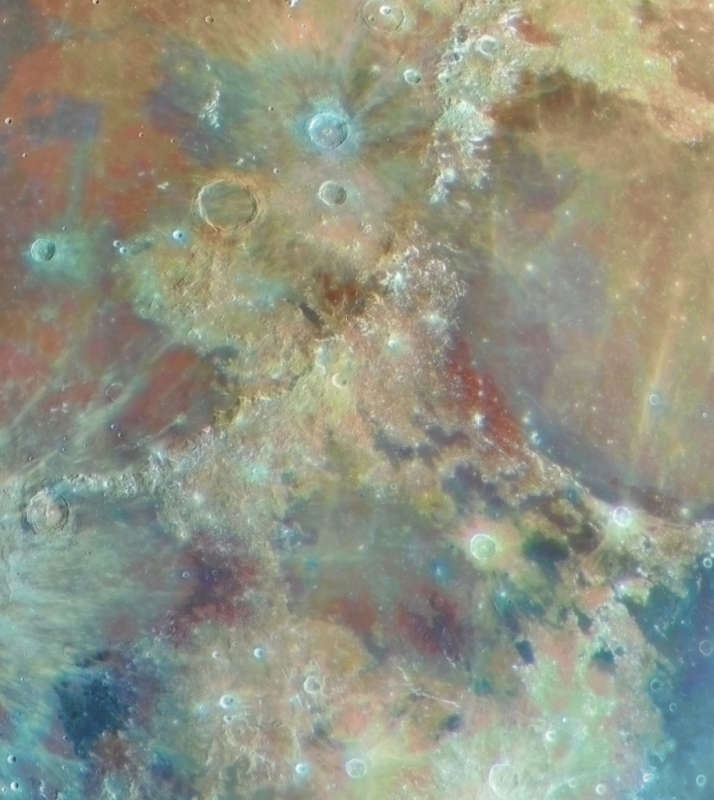Credit & Copyright: Alain Paillou
Explanation:
The Moon
is normally seen in subtle shades of grey.
But small, measurable color differences
have been greatly exaggerated in this mosaic of high-resolution images
captured near the Moon's full phase,
to construct a multicolored, central moonscape.
The different colors are recognized to
correspond to real differences in the mineral makeup of
the lunar surface.
Blue hues reveal
titanium rich
areas while more orange and purple colors
show regions relatively poor in titanium and iron.
The intriguing Sea of Vapors, or Mare Vaporum, is below center
in the frame with the sweeping arc
of the lunar Montes Apenninus (Apennine Mountains) above it.
The dark floor of 83 kilometer diameter Archimedes crater within
the Sea of Rains, or Mare Imbrium, is toward the top left.
Near the gap at the top of the Apennine's arc
is the Apollo 15 landing site.
Calibrated by
rock samples returned
by the Apollo missions, similar multicolor
images from spacecraft
have been used to explore
the
Moon's global surface composition.
1998 1999 2000 2001 2002 2003 2004 2005 2006 2007 2008 2009 2010 2011 2012 2013 2014 2015 2016 2017 2018 2019 2020 2021 2022 2023 2024 |
Январь Февраль Март Апрель Май Июнь Июль Август Сентябрь Октябрь Ноябрь Декабрь |
NASA Web Site Statements, Warnings, and Disclaimers
NASA Official: Jay Norris. Specific rights apply.
A service of: LHEA at NASA / GSFC
& Michigan Tech. U.
|
Публикации с ключевыми словами:
Moon - Луна - химический состав
Публикации со словами: Moon - Луна - химический состав | |
См. также:
Все публикации на ту же тему >> | |
